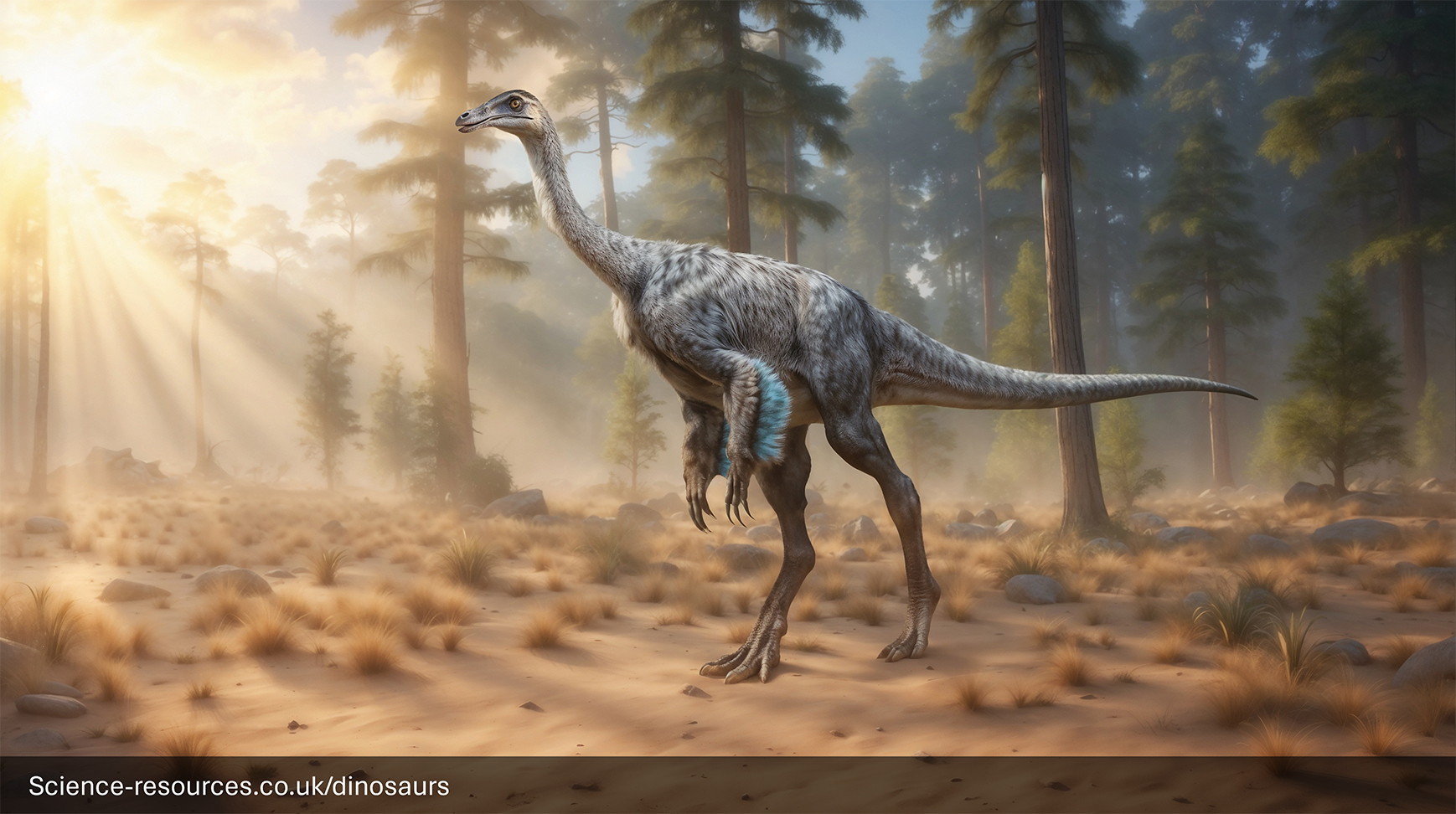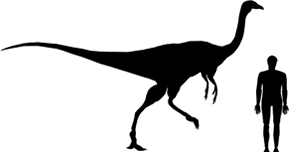Dinosaurs A:Z | G
You may also be intrested in: Free Dinosaur games
Dinosaurs: Gallimimus (Chicken Mimic)
You may also be intrested in: Free Dinosaur games
Last updated: 10th Dec 2024 Gallimimus was a fast, omnivorous dinosaur that lived during the Late Cretaceous period, about 70 million years ago. It is known for its resemblance to modern-day flightless birds like the ostrich, earning it the name "Chicken Mimic." Length: Gallimimus could grow up to 6 meters (20 feet) long. Weight: They weighed around 490 kilograms (900 pounds), making them one of the larger members of their group. Gallimimus had a small head with a toothless beak, similar to modern birds. It had long, slender arms ending in long three-fingered hands, which were likely used for digging and grabbing small animals or eggs. Gallimimus stood on two legs and had long hind limbs ending in three clawed toes, perfect for sprinting. Its long neck and tail helped with balance and stability during fast turns. Generative AI Notification: Some elements of this image have been created or enhanced using AI technology. To find out how we create all our dinosaurs, click here. Gallimimus was an omnivore, meaning it ate both plants and animals. Its diet likely included small mammals, lizards, eggs, insects, and possibly some plants. The shape of its beak suggests it may have also filtered food from water or mud, similar to some modern ducks. Fossils of Gallimimus have been found in Mongolia, indicating it lived in prehistoric Asia. They probably lived in environments where they could run fast to escape predators. • The name Gallimimus means "Chicken Mimic" because its neck bones look like those of chickens. • Scientists believe Gallimimus had feathers, though there's no direct evidence. Related dinosaurs had feathers, supporting this idea. • Gallimimus could run at speeds of 47-55 kilometers per hour (30-34 miles per hour), making it one of the fastest dinosaurs. • Gallimimus was featured in the movie Jurassic Park, where it was shown moving in flocks. There is some fossil evidence suggesting they might have lived in groups. • Although Gallimimus looked like an ostrich, it was not closely related to modern birds. This similarity is a result of convergent evolution. What is a Gallimimus?
How big was Gallimimus?
Appearance
 Gallimimus
GallimimusWhat did Gallimimus eat?
Where did Gallimimus live?
Interesting facts
Pronounced: GAL-ih-MIME-us


Gallimimus Facts
Name Means: "Chicken Mimic"
Length: 20 feet (6 m)
Height: 8 feet (3.5 m)
Weight: 1,000 pounds (500 kg)
Diet: Omnivore (Insects,
Lizards, Eggs, Plants)
Time: Late Cretaceous - 70 million years ago
Habitat: River
Valleys
Fossils Found: Asia
Gallimimus belonged to a group of Dinosaurs called the Ornithomimids (Bird Mimics) named so due to their resemblance to modern day flightless birds such as the Ostrich. Other members of this group included Ornithomimus, Pelecanimimus, and Struthiomimus.
Gallimimus moved on two legs and was designed for speed. It used its long legs and high ankle joints to sprint quickly, helping it evade predators and catch prey. Its tail provided balance for its long neck during fast turns.
Gallimimus had a toothed beak, long slender arms, and legs built for speed. Its long tail and neck helped stabilize it while running. The similarity to modern birds, despite not being closely related, showcases interesting convergent evolution. Scientists believe its feathers and unique beak helped it adapt to its environment.
Q1: What is a Gallimimus?
A1: Gallimimus was a fast, bird-like dinosaur that lived during the Late Cretaceous period, around 70 million years ago. Its name means "chicken mimic" because its neck bones resemble those of modern chickens.
Q2: How big was the Gallimimus?
A2: Gallimimus could grow up to 6 meters (20 feet) long and weigh around 400-490 kilograms (880-1,080 pounds). It stood about 1.9 meters (6 feet 3 inches) tall at the hip.
Q3: What did Gallimimus eat?
A3: Gallimimus was likely an omnivore, meaning it ate both plants and small animals. It may have fed on insects, small reptiles, and eggs, as well as plants.
Q4: How did Gallimimus move?
A4: Gallimimus was a very fast runner, capable of reaching speeds of up to 55.4 km/h (34 mph). Its long legs and lightweight body helped it move quickly to escape predators.
Q5: Where have Gallimimus fossils been found?
A5: Fossils of Gallimimus have been discovered in Mongolia, particularly in the Gobi Desert.
Q6: What makes Gallimimus unique among dinosaurs?
A6: Gallimimus is unique because of its bird-like features, such as a toothless beak and long, slender legs. It also had large eyes and a long neck, which helped it spot predators and find food.
Q7: How do scientists learn about Gallimimus?
A7: Scientists study fossils, including bones and sometimes skin impressions, to learn about Gallimimus. They also use modern technology like CT scans to examine the fossils in detail.
Q8: Did Gallimimus live alone or in groups?
A8: Evidence suggests that Gallimimus may have lived in groups, as several fossils have been found together in what is known as a bone bed.
Q9: What new discoveries have been made about Gallimimus?
A9: Recent research indicates that Gallimimus may have had feathers, similar to its relative Ornithomimus. This suggests that it had good vision and intelligence comparable to modern birds.
Q10: Why is Gallimimus important to study?
A10: Studying Gallimimus helps scientists understand more about the evolution of dinosaurs and their adaptations. It also provides insights into the behavior and ecology of fast-moving, bird-like dinosaurs.
Which family of Dinosaurs did Gallimimus belong to?
How did Gallimimus move?
What were the unique features of Gallimimus?
Gallimimus FAQ
You may also be intrested in:
Tags: How big was Gallimimus, Gallimimus size, where does Gallimimus live, how tall are Gallimimus, what does Gallimimus mean, Gallimimus, Gallimimus facts